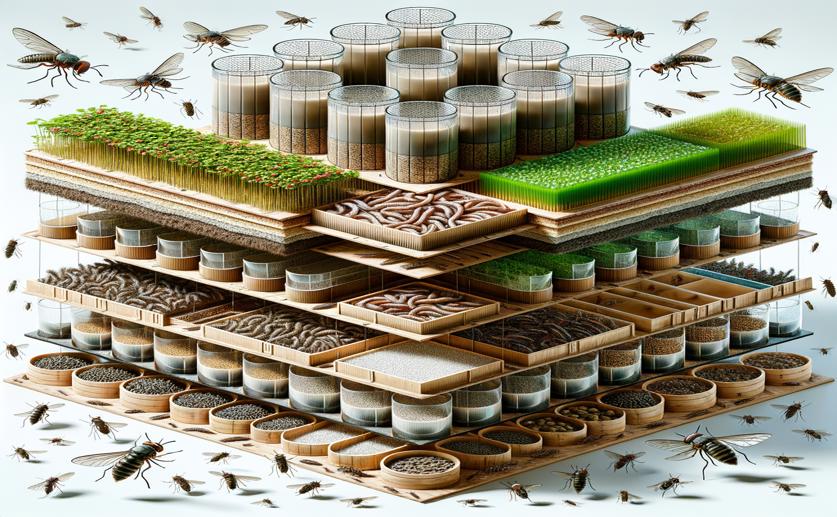
A Multilayered Farming System for Producing Black Soldier Fly Larvae
Jenn Hoskins
12th July, 2024

Image Source: Natural Science News, 2024
Key Findings
- The University of Malta study explored using mealworm larvae (MWL) and black soldier fly larvae (BSFL) to convert kitchen waste into valuable biomass
- MWL fed on kitchen waste grew to an average length of 2.4 cm and weight of 0.12 g, with high protein (44.2%) and lipid (16.5%) content
- BSFL fed on MWL frass and other feeds achieved high growth rates and efficient feed conversion, making them suitable for animal and aquaculture feed
AgricultureSustainabilityAnimal Science
References
Main Study
1) A multitrophic culture system for the production of black soldier fly larvae (Hermetia illucens)
Published 11th July, 2024
https://doi.org/10.1007/s44187-024-00127-2
Related Studies
2) Environmental impact of the production of mealworms as a protein source for humans - a life cycle assessment.
3) An exploration on greenhouse gas and ammonia production by insect species suitable for animal or human consumption.
4) Bioconversion of Three Organic Wastes by Black Soldier Fly (Diptera: Stratiomyidae) Larvae.



 5th March, 2024 | Jenn Hoskins
5th March, 2024 | Jenn Hoskins